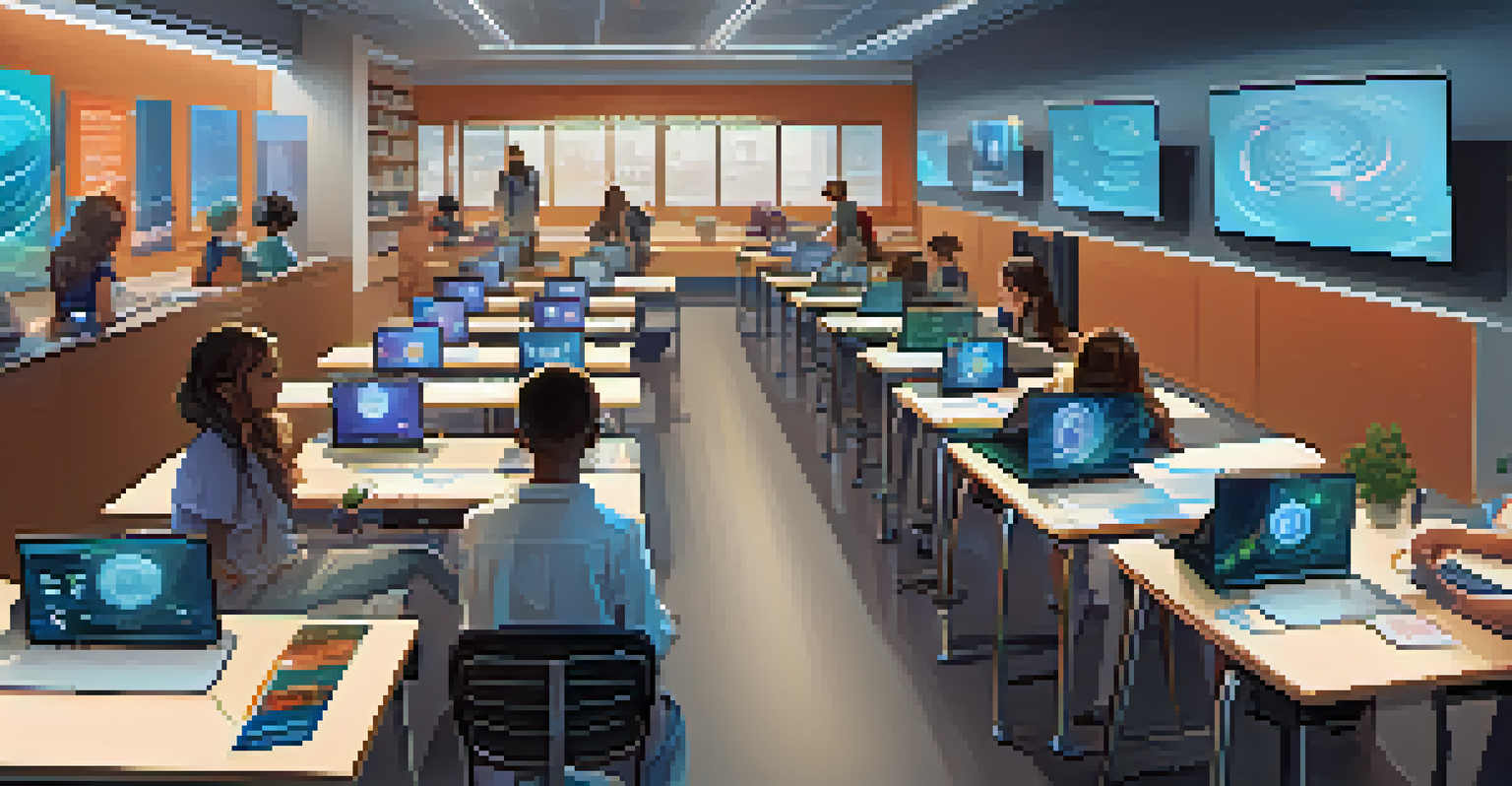Asynchronous Learning Explained: Flexibility and Autonomy

Understanding Asynchronous Learning: A Simple Overview
Asynchronous learning is a method where students learn on their own schedule, rather than attending live classes. This approach allows learners to access materials, such as videos and readings, at their convenience. Think of it like watching a series on your favorite streaming platform; you can pause, rewind, and binge-watch at your own pace.
The greatest benefit of education is that it empowers individuals to take control of their own learning.
One of the key features of asynchronous learning is that it gives students control over their learning journey. They can choose when and where to engage with the content, which can lead to a more personalized and effective educational experience. This flexibility is especially beneficial for those balancing work, family, or other commitments.
Moreover, asynchronous learning often includes a variety of resources, such as discussion forums and quizzes, that enhance the learning process. This diverse range of materials caters to different learning styles, ensuring that everyone can find something that resonates with them.
The Benefits of Flexibility in Learning
Flexibility is one of the most appealing aspects of asynchronous learning. Students can create their own schedules that fit their lifestyles, allowing them to study at their peak performance times. For instance, a night owl can tackle difficult subjects in the evening when they feel most alert and focused.

This flexibility also allows learners to take breaks when needed, which can help prevent burnout. Instead of being tied to a rigid classroom schedule, students can pause their studies to recharge, leading to a more sustainable learning process. Just like a marathon runner knows when to hydrate and rest, learners can pace themselves to achieve their best results.
Flexibility Empowers Learners
Asynchronous learning allows students to create their own study schedules, accommodating personal commitments and optimizing their learning times.
Furthermore, asynchronous learning accommodates different time zones and geographical distances, making education accessible to a global audience. This means that whether you're in New York or New Delhi, you can engage with the same material without worrying about timing conflicts.
Promoting Autonomy in Learning
Asynchronous learning empowers students to take charge of their education. By allowing individuals to set their own goals and timelines, it fosters a sense of ownership and responsibility. Imagine being the captain of your own ship, navigating through the vast ocean of knowledge at your own pace.
Learning is a treasure that will follow its owner everywhere.
This autonomy can boost motivation, as learners are more likely to engage with material that interests them. They can dive deeper into subjects they are passionate about, leading to a more fulfilling educational experience. Just as a gardener tends to their favorite plants, students can cultivate their knowledge based on personal interests.
Additionally, this approach encourages self-discipline and time management skills, which are essential in both academic and professional settings. When learners must plan their study schedules, they develop important life skills that will serve them well beyond the classroom.
Challenges of Asynchronous Learning to Consider
While asynchronous learning offers many benefits, it also presents unique challenges. One of the main hurdles is the potential for isolation, as students may miss the camaraderie of a traditional classroom setting. Without face-to-face interaction, some learners might struggle to stay motivated or feel disconnected from their peers.
Another challenge is the need for strong self-motivation and discipline. Not everyone thrives in an environment without set schedules; some may find it hard to stay focused without the structure of live classes. Just as some people are naturally inclined to work out alone while others prefer group classes, learners have different preferences.
Promotes Autonomy in Education
This learning method encourages students to take charge of their education, fostering ownership and motivation through self-directed goals.
Lastly, technical difficulties can pose a barrier to effective asynchronous learning. If a student faces issues with internet connectivity or struggles with the technology used for courses, it can hinder their ability to engage fully with the material. This underscores the importance of reliable support systems for learners.
Making the Most of Asynchronous Learning
To maximize the benefits of asynchronous learning, students can implement personalized strategies. Creating a dedicated study space can help establish a productive environment, similar to how a chef needs a well-organized kitchen to cook efficiently. A clutter-free desk can lead to a clear mind and better focus.
Setting specific goals and deadlines can also enhance accountability. By breaking down larger tasks into smaller, manageable chunks, learners can track their progress and celebrate small victories along the way. This approach transforms the learning journey into a series of achievements, much like climbing a staircase one step at a time.
In addition, actively engaging with fellow learners through discussion boards or study groups can help combat feelings of isolation. Sharing insights and experiences can create a sense of community, making the learning experience more enjoyable and enriching.
Tools to Enhance Asynchronous Learning Experiences
Several tools and platforms can enhance the asynchronous learning experience, making it more interactive and engaging. Learning Management Systems (LMS) like Moodle or Blackboard allow students to access resources, submit assignments, and participate in discussions all in one place. It’s like having a virtual classroom at your fingertips, accessible whenever you need it.
Additionally, video conferencing tools such as Zoom or Microsoft Teams can facilitate virtual meetings and discussions, providing a space for real-time interaction, even if it's not a live class. These tools help bridge the gap between asynchronous and synchronous learning, allowing for flexibility without sacrificing connection.
Challenges Require Strong Discipline
While offering many benefits, asynchronous learning demands strong self-motivation and can lead to feelings of isolation without proper support.
Lastly, incorporating apps for time management, such as Todoist or Trello, can keep learners organized and on track. By scheduling tasks and setting reminders, students can manage their time effectively, ensuring they make the most of their independent study hours.
The Future of Asynchronous Learning
As we look ahead, the future of asynchronous learning seems promising. With advances in technology, educational institutions are increasingly adopting this flexible approach to cater to diverse learner needs. The rise of online courses and programs reflects a growing recognition of the benefits of learning at one's own pace.
Moreover, the integration of artificial intelligence and personalized learning experiences is set to revolutionize asynchronous education. Imagine having a virtual tutor that adapts to your learning style and pace, providing tailored feedback and resources. This could make learning even more effective and engaging for students.

Asynchronous learning is not just a trend but a shift in how we approach education. As we embrace these changes, we can expect to see a more inclusive and dynamic learning landscape that prioritizes flexibility and autonomy for all learners.